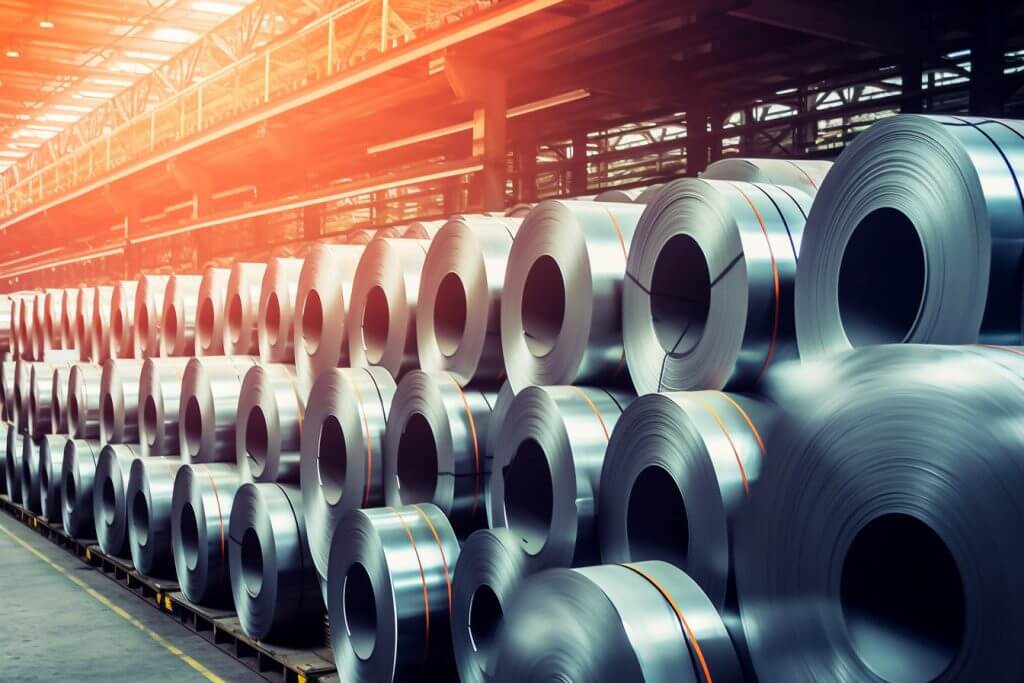Alloy steel and carbon steel are two commonly used materials in manufacturing that can help realize your design in a more perfect way. But you need to know that each of these metals has its own unique properties and applications. So understanding the differences between them is key to getting the most out of them.

In this article, we will introduce you to the difference between alloy and carbon steel, and help you make an informed choice in choosing the right metal material for your project.
The Meaning and Application of Alloy Steel?
Almost everyone knows what stainless steel is. It is the best cooking utensils in our life like pots and pans. Any combination of different metals can be called an alloy. But what we are going to introduce today is another example of alloy – alloy steel. This is a steel combined in varying proportions with one or more of the following metals: manganese, iron, nickel, titanium, copper, chromium, and aluminum. The main difference between stainless steel and alloy steel is that alloy steel is composed of nickel and copper, while stainless steel is an alloy steel containing high chromium (usually 12%-30%).
Manganese can improve the toughness and strength of steel very well. In addition, steel with higher manganese content also has higher wear resistance. Copper improves strength and toughness, especially atmospheric corrosion resistance. Titanium can reduce the steel’s aging sensitivity and cold brittleness and improve welding performance. At the same time, it also can improve corrosion resistance, such as austenitic stainless steel.
According to the alloy content, alloy steel can be divided into high, medium, and low alloy steel. Among them, the total content of alloy elements in high-alloy steel is less than 5%, medium-alloy steel is between 5%-10%, and high-alloy steel refers to more than 10%. The most famous example of high-alloy steel is stainless steel.

Application
Alloy steel can be used in various industries. According to different uses, we can roughly divide its applications into the following 3 categories:
Structural steel: Usually used in the machinery manufacturing industry and construction industry.
Tool steel: mainly used to make tools, such as cutting tools, measuring tools, molds, and wear-resistant tools.
Special performance steel: Usually used in some special industries, such as smelting in electric furnaces.
The Meaning and Application of Carbon Steel
Now you know what alloy steel is and what it is used for. So, Now, we need to solve the next question for you: What is carbon steel? Carbon steel refers to steel with a carbon content between 0.02% and 2% and very little other metal content. At the same time, carbon steel is also the metal material with the highest output in the market.

Application
In the process of CNC machining, the higher the carbon content in the alloy material, the faster the metal will harden when heated. It is precisely because of this that carbon steel can also be divided into three categories: high, medium, and low.
High carbon steel: The carbon content is between 0.6% and 2%. The tempering time of high-carbon steel is longer, and its main uses are generally bearings, knives, rails, etc.
Medium carbon steel: The carbon content is between 0.3% and 0.6%. The carbon content is relatively moderate, and the main purpose is to make stainless steel.
Low carbon steel: The carbon content is between 0.02% and 0.3%. Short tempering time, soft, stamping resistant, and ductile. The main purpose is to manufacture steel bars, stamping machines, special steel, etc.
What is the Difference between Alloy Steel and Carbon Steel?
Although the two species look very similar physically, they are chemically very different. It is precisely because of these unique properties that they are irreplaceable and provide a reason for the industry to use them in order to benefit from them. Here, we will show you the differences between them so that you can better apply them in your projects.
| Project | Alloy Steel | Carbon Steel |
| Applications | Used in various industries to manufacture girders, structural profiles, aircraft parts, ship propellers, bars, rails, bars, screws, bolts, nails and wires, etc. | Popular in many manufacturing industries for the production of automotive body parts, food cans, wheels, crankshafts, gears, machine parts, pipes, cutting tools, springs, molds, construction and bridge components, etc. |
| Metal Content Radio | Other metal elements in excess of iron and carbon | Highest carbon content and extremely low content of other metal elements |
| Corrosion resistance | Good | Poor |
| Hardness | Low | High |
| Strength | Low | High |
| Toughness | Low | High |
| Malleability | Low | High |
| Weldability | Low | High |
| Ductility | High | Low |
| Cost | Expensive | Inexpensive |
Conclusion
In this article, we have discussed the difference between alloy steel and carbon steel. Now, you fully understand how to distinguish them, and how to make better use of them in your project to get the most benefit. But what you need to know is that these benefits are based on you having a reliable partner. If you are still looking for a suitable partner for your project, CNCMass, which owns a professional team, excellent machines, and advanced processing technology will be your best choice. To get started, click the “Get Quote” button below to get your instant quote!



